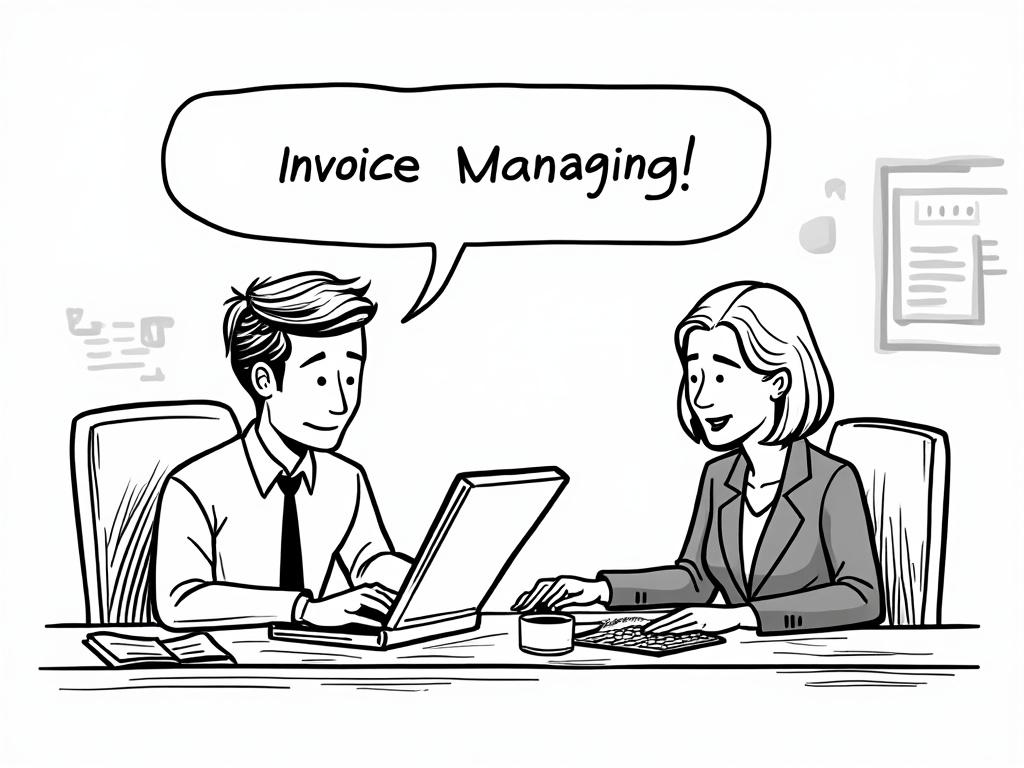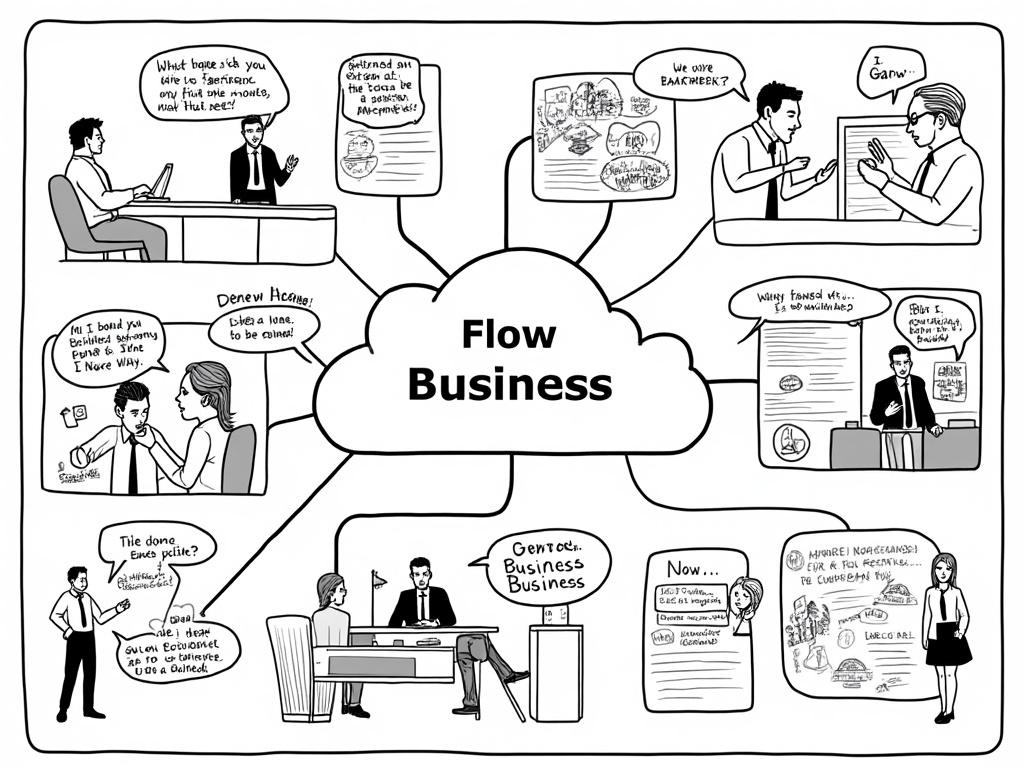
Tax vs Financial Accounting in Estonia: Essential Differences Explained
Reading time: 12 minutes
Table of Contents
- Introduction: Two Systems, One Business
- Fundamental Differences Between Tax and Financial Accounting
- Estonian Specifics: Unique Accounting Environment
- Practical Implications for Estonian Businesses
- Compliance Requirements and Deadlines
- Common Challenges and How to Overcome Them
- Digital Transformation of Accounting in Estonia
- Conclusion: Balancing Both Worlds
- Frequently Asked Questions
Introduction: Two Systems, One Business
Ever found yourself puzzled by the seemingly parallel universes of tax and financial accounting in Estonia? You’re certainly not alone. While both systems deal with the same financial data, they serve distinctly different purposes and follow separate rules that can sometimes feel contradictory.
Here’s the straight talk: Understanding these differences isn’t just an academic exercise—it’s a practical necessity for making informed business decisions, satisfying stakeholders, and avoiding costly compliance errors. The Estonian business environment, with its distinctive digital-first approach and unique corporate income tax system, adds another layer of complexity to this equation.
This guide cuts through the complexity to provide a clear roadmap for navigating both accounting systems. Whether you’re a startup founder trying to make sense of Estonian accounting requirements, an established business optimizing financial processes, or an international company expanding into Estonia, you’ll find practical insights to turn potential accounting challenges into strategic advantages.
Fundamental Differences Between Tax and Financial Accounting
At their core, tax and financial accounting serve different masters with different expectations. Financial accounting speaks to investors, lenders, and other stakeholders, while tax accounting addresses the requirements of tax authorities. Let’s break down these fundamental differences:
Purpose and Audience Orientation
Financial accounting aims to provide an accurate picture of a company’s financial health and performance to external stakeholders. It focuses on presenting information that’s useful for economic decision-making by investors, creditors, and other parties interested in the business’s financial status.
Tax accounting, by contrast, exists to comply with tax legislation and calculate the correct amount of tax payable. Its primary audience is the Estonian Tax and Customs Board (Maksu- ja Tolliamet), and its goal is to determine tax liabilities according to applicable tax laws.
Consider this scenario: An Estonian tech startup might prepare financial statements showing steady growth in revenue and profitability to attract potential investors, while simultaneously developing tax reports that leverage Estonian tax laws to defer taxation on reinvested profits—same business, two different stories told to different audiences.
Governing Principles and Standards
In Estonia, financial accounting follows either:
- Estonian Generally Accepted Accounting Principles (Estonian GAAP), based on the Estonian Accounting Act and guidelines issued by the Estonian Accounting Standards Board
- International Financial Reporting Standards (IFRS) for larger or listed companies
Tax accounting, meanwhile, must comply with:
- Income Tax Act (Tulumaksuseadus)
- Value Added Tax Act (Käibemaksuseadus)
- Social Tax Act (Sotsiaalmaksuseadus)
- Other relevant tax legislation
This dual-system approach means that transactions might receive entirely different treatment depending on which accounting lens you’re looking through.
| Aspect | Financial Accounting | Tax Accounting |
|---|---|---|
| Primary purpose | Provide accurate financial information for stakeholders | Calculate correct tax liability |
| Main audience | Investors, creditors, management, employees | Tax authorities |
| Governing standards | Estonian GAAP or IFRS | Estonian tax legislation |
| Timing recognition | Matching principle (expenses matched with related revenues) | According to tax law specifications |
| Flexibility | More judgment and estimation allowed | Stricter rules with less flexibility |
Estonian Specifics: Unique Accounting Environment
Estonia’s accounting landscape contains several distinctive features that set it apart from other European jurisdictions. Understanding these peculiarities is crucial for properly managing the intersection of tax and financial accounting.
The Estonian Corporate Income Tax System
Perhaps the most notable feature of Estonia’s accounting environment is its unique corporate income tax system. Unlike most countries, Estonia doesn’t impose income tax on corporate profits when they’re earned but rather when they’re distributed as dividends or deemed distributions.
This creates an interesting dynamic between tax and financial accounting:
In financial accounting, profits are recognized when earned, following accrual principles, and appear as retained earnings on the balance sheet.
In tax accounting, these profits remain untaxed until distribution, creating a situation where no current tax expense needs to be recognized until a distribution decision is made.
Kersti Karu, a tax advisor at Grant Thornton Baltic, explains: “The Estonian tax system effectively creates a timing difference that doesn’t exist in most other jurisdictions. Companies can indefinitely defer taxation by reinvesting profits, which allows for significant tax planning opportunities but also requires careful tracking of potential future tax liabilities.”
E-Governance and Digital Accounting
Estonia’s pioneering e-governance infrastructure has transformed the accounting landscape. The digital-first approach includes:
- Electronic submission of financial statements through the Commercial Register
- Real-time tax reporting through the e-Tax Board
- Digital signing capabilities for all financial documents
- Machine-readable financial statement formats (XBRL)
This digital environment creates additional considerations for both accounting systems. For example, financial accounting must produce XBRL-compliant statements, while tax accounting leverages real-time reporting capabilities that influence how transactions are recorded and classified.
Real-world example: An Estonian manufacturing company implemented a fully integrated ERP system that generates both financial statements and tax reports from the same database. However, they needed to create separate workflows and validation rules within the system to ensure that transactions were appropriately treated according to both financial and tax principles—demonstrating the practical challenge of maintaining both systems simultaneously in Estonia’s digital environment.
Practical Implications for Estonian Businesses
The dual system of tax and financial accounting creates several practical implications for businesses operating in Estonia. Let’s examine how these differences play out in day-to-day operations.
Revenue Recognition Differences
Revenue recognition showcases the divergence between tax and financial accounting approaches:
Financial accounting recognizes revenue when performance obligations are satisfied, following either Estonian GAAP or IFRS 15 principles—which might mean recognizing revenue over time for long-term contracts.
Tax accounting, particularly for VAT purposes, generally recognizes revenue at the time of supply or when an invoice is issued, which may not align with financial accounting recognition.
Consider this case study: An Estonian software development company provides customized software solutions to clients under 12-month contracts. For financial accounting purposes, they recognize revenue progressively as development milestones are achieved. For VAT purposes, however, they must calculate VAT liability based on their monthly invoicing schedule, regardless of how much revenue has been recognized in their financial books.
Depreciation and Asset Valuation
Another area of significant divergence is the treatment of fixed assets:
Financial accounting depreciates assets over their useful economic life using methods that best reflect the consumption pattern of the asset’s benefits (straight-line, diminishing balance, etc.).
Tax accounting in Estonia doesn’t have specific depreciation rules for income tax purposes due to the distribution-based tax system. However, for local government revenue accounting or for businesses with permanent establishments abroad, specific tax depreciation rules might apply.
This creates a situation where companies maintain different asset registers or valuation methods depending on the accounting purpose—adding complexity but also creating opportunities for strategic financial planning.
Compliance Requirements and Deadlines
Maintaining compliance with both tax and financial accounting requirements means juggling different deadlines, formats, and submission procedures.
Financial Accounting Compliance
Estonian companies must prepare and submit annual financial statements to the Commercial Register within six months after the end of the financial year. These statements must include:
- Balance sheet
- Income statement
- Cash flow statement (with exceptions for small entities)
- Statement of changes in equity
- Notes to the financial statements
- Management report
The submission must be in XBRL format and digitally signed by authorized representatives.
Tax Accounting Compliance
Tax compliance follows a different schedule, mostly centered around monthly and quarterly obligations:
- VAT returns: due by the 20th of the following month
- Income and social tax returns (TSD): due by the 10th of the following month
- Corporate income tax on distributions: declared on the TSD in the month following distribution
- Annual income tax return for sole proprietors: due by April 30th of the following year
Jaan Tamm, a certified accountant at BDO Estonia, notes: “The most common compliance error we see is companies failing to reconcile their financial and tax records before major reporting deadlines. This leads to inconsistencies that trigger tax authority inquiries. We recommend implementing a monthly reconciliation process to address discrepancies early.”
Common Challenges and How to Overcome Them
The dual system of accounting creates several common challenges for Estonian businesses. Here are the most frequent issues and practical approaches to overcome them:
Challenge 1: Reconciling Different Treatment of Transactions
When transactions receive different treatment under tax and financial accounting rules, reconciliation becomes complex and time-consuming.
Solution approach: Implement a systematic reconciliation process that includes:
- Creating dedicated account codes for items with divergent treatment
- Maintaining supplementary schedules that track differences
- Documenting reconciliation processes for knowledge transfer
- Using accounting software with multi-ledger capabilities
Real-world implementation: An Estonian retail chain created a custom reconciliation template that maps financial accounting entries to their tax accounting counterparts. This template is updated monthly and serves as both a control mechanism and an audit trail, reducing year-end compliance work by approximately 40 hours.
Challenge 2: Tracking Potential Distribution Taxes
The Estonian corporate income tax system creates a unique challenge: tracking potential future tax liabilities on undistributed profits.
Solution approach:
- Develop a distribution planning tool that models various dividend scenarios
- Implement detailed tracking of equity components with different tax implications
- Create internal policies for documenting the tax status of retained earnings
- Consider disclosure of potential tax liabilities in financial statement notes
By addressing these challenges proactively, Estonian businesses can minimize compliance risks while optimizing the advantages offered by Estonia’s unique accounting and tax environment.
Digital Transformation of Accounting in Estonia
Estonia’s reputation as a digital society extends fully to its accounting practices. The digital transformation of accounting processes has significant implications for how businesses manage the tax and financial accounting divide.
Integrated Software Solutions
Modern Estonian accounting relies heavily on integrated software solutions that can handle both tax and financial requirements. The most effective solutions offer:
- Automated tax calculation and reporting capabilities
- Multi-ledger functionality to maintain separate books for different purposes
- Direct integration with the e-Tax Board and Commercial Register
- Audit trail features that document treatment differences
- Customizable reporting that satisfies both tax and financial needs
Consider this example: An Estonian e-commerce business implemented a cloud-based accounting system that automatically calculates VAT on transactions based on tax rules while simultaneously recording revenue according to financial accounting principles. The system generates financial reports for management purposes and tax reports for compliance without requiring duplicate data entry, saving approximately 15 hours of accounting work monthly.
Real-time Reporting Implications
The move toward real-time reporting is reshaping how businesses approach accounting:
“Estonia is moving toward a system where the line between tax and financial accounting becomes increasingly blurred from a reporting perspective,” explains Mari Mägi, Digital Accounting Specialist at Deloitte Estonia. “With real-time reporting initiatives, businesses must ensure their underlying accounting data can simultaneously satisfy both purposes with minimal manual intervention.”
This trend requires businesses to:
- Design chart of accounts structures that accommodate both systems
- Implement transaction coding systems that capture tax-relevant data at the point of entry
- Develop automated reconciliation processes
- Create exception reporting to identify potential discrepancies
The digital transformation represents both a challenge and an opportunity—companies that effectively leverage technology to bridge the tax and financial accounting gap gain efficiency while reducing compliance risks.
Conclusion: Balancing Both Worlds
Navigating the dual landscapes of tax and financial accounting in Estonia isn’t just about compliance—it’s about strategic advantage. Throughout this guide, we’ve explored the fundamental differences between these systems, the unique Estonian factors that influence them, and practical approaches to managing their coexistence.
The key takeaway? Success lies not in treating these systems as separate burdens but in developing integrated approaches that leverage Estonia’s distinctive accounting environment. By understanding where and why these systems diverge, businesses can implement processes that satisfy both requirements while minimizing duplication of effort.
Estonia’s unique corporate income tax system, combined with its digital-first approach to compliance, creates both challenges and opportunities. Companies that master this balance gain more than just compliance—they develop financial clarity that supports better business decisions.
Whether you’re establishing accounting processes for a new Estonian venture or optimizing existing ones, remember that the goal isn’t just accurate numbers but actionable financial intelligence that serves both tax compliance and business performance needs.
In the end, effective accounting in Estonia isn’t about choosing between tax and financial perspectives—it’s about maintaining both views simultaneously while using their different insights to guide your business forward.
Frequently Asked Questions
How does Estonia’s distribution-based corporate tax system affect accounting practices?
Estonia’s unique system taxes profits only when distributed, not when earned. This creates a significant divergence between tax and financial accounting. In financial books, profits are recognized when earned and accumulate as retained earnings. For tax purposes, these profits aren’t taxable events until distribution decisions are made. This requires businesses to maintain detailed tracking of the tax status of retained earnings and potential future tax liabilities. Companies must develop specific accounting policies for documenting distribution decisions and forecasting potential tax implications of different distribution scenarios.
Can small Estonian companies use simplified accounting approaches while remaining compliant?
Yes, small Estonian companies can utilize simplified approaches. The Accounting Act provides relief for small entities, including simplified financial statement formats and reduced disclosure requirements. For very small companies (micro-entities), further simplifications are available. However, tax compliance requirements remain largely the same regardless of size. The most effective simplification strategy involves implementing integrated accounting software that handles both systems simultaneously, using appropriate templates for the company’s size category, and focusing documentation efforts on areas where tax and financial treatments diverge significantly. Even with simplifications, maintaining clear separation between owner and company finances remains critical.
How should international companies adapt their accounting processes when entering the Estonian market?
International companies entering Estonia should first understand the fundamental differences in Estonia’s corporate tax system compared to their home jurisdiction. They should implement dual-purpose accounting systems capable of generating both Estonian-compliant financial statements and satisfying local tax requirements. Group accounting policies may need adaptation to accommodate Estonia’s unique distribution-based tax system and e-governance infrastructure. Companies should consider engaging local accounting expertise, especially during initial setup, to ensure proper configuration of systems. Special attention should be paid to transfer pricing documentation and intra-group transactions, which have both financial reporting and tax implications. Finally, leveraging Estonia’s digital infrastructure through direct system integrations with tax authorities and the commercial register can significantly streamline compliance.



